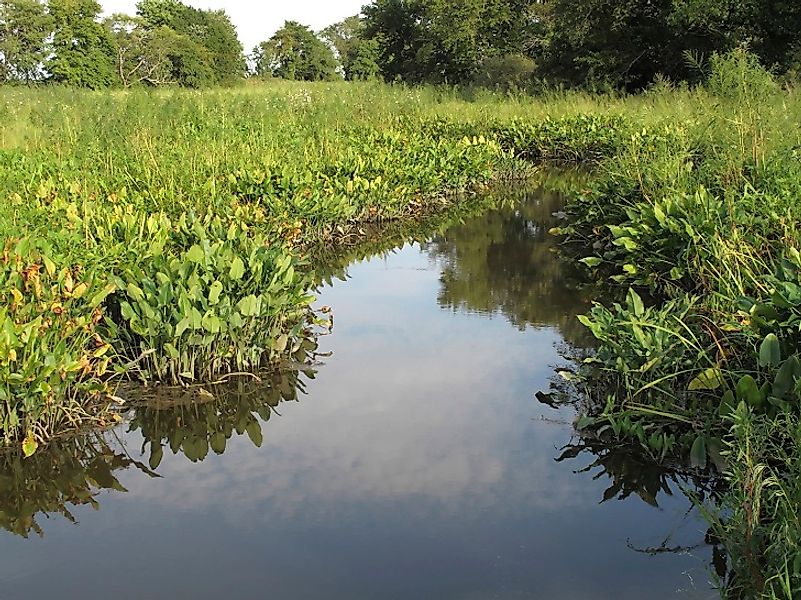The Nanticoke River

5. Description
The Nanticoke River is said to be the most important tributary of the Chesapeake Bay, and is measured to be more than 60 miles long. The Nanticoke arises in Delaware's Kent County, and then flows through a route passing through Sussex County (also in Delaware), and then forms the boundary between Maryland's Dorchester County and Wicomico County as it flows between them before emptying into Chesapeake Bay. It is said to be one of the healthiest rivers of this Bay, as this area includes nearly 725,000 acres of protected watershed area, and provides the wetland habitats for many threatened water species and plants. It has several inflows, such as the following tributaries of Cow Creek, Jack Creek, and Broad Creek. Towns situated alongside the river include Vienna, Sharptown, Nanticoke, and Bivalve (all in Maryland), as well as Seaford, Delaware.
4. Historical Role
The Nanticoke River region was explored by famed English Captain John Smith in the year 1608. He found the people gentle and kind that were based in the heart of Delmarva Peninsula, and the river was named for one of the Native American groups who at that time lived nearby the area. Smith was also the first person to have mapped this very Nanticoke River for them. The area that is now the city of Vienna, Maryland was once home to the Native Americans encountered by Smith. It was also observed by Smith that the tribe settled in this area derived their main occupations from hunting and fishing, and were also known as the "Tidewater people". They also used to trade in commodities like beads that were made out of shells, as well as animal pelts. In the year 1990, the river area was dredged so as to allow for shipping in the area along its course. In the year 2012, the dredge work was started once again but, due to some financial reasons, it had to be stopped.
3. Modern Significance
The Nanticoke River area is said to possess more than half of the area under the Chesapeake wetlands, and it covers an impressive area of Maryland’s tidal wetlands. It is even seen that the area is a valuable source of recreational sports and commercial fisheries alike. Around 43% of the land used here is for agriculture, and it can be seen that the area has around 1,300 farms, many under wetland production. Widespread poultry farming is also carried out in the area, and these farms must provide cover crops to prevent agricultural waste for leaching into the Nanticoke's waters and harm its wetlands. Moreover, each farm possesses storage facilities to keep the animal waste out of the waters.
2. Habitat and Biodiversity
The Nanticoke River has rich habitats, and it contains many species of fishes like the Yellow and White perches, rock-fishes, and herrings. The area is also a home to such rare species as Carpenter frogs, Delmarva fox squirrels, and Eastern tiger salamanders. There are also many birds seen here, including American Red-starts, Bald eagles, herons, and wood ducks.
1. Environmental Threats and Territorial Disputes
The wildlife and fish services departments are continually working towards the preservation of the Nanticoke's watershed areas. This includes ensuring the quality of the water and conservation of natural ecosystems with the help of local farmers and governments at all levels. Nonetheless, it has been seen that the drainage and streamlining of the riverine area for agricultural purpose has been responsible for watershed habitat losses. It will likely take many years to restore these areas to their natural states, given that the lure of economic development isn't allowed to supersede such efforts.











